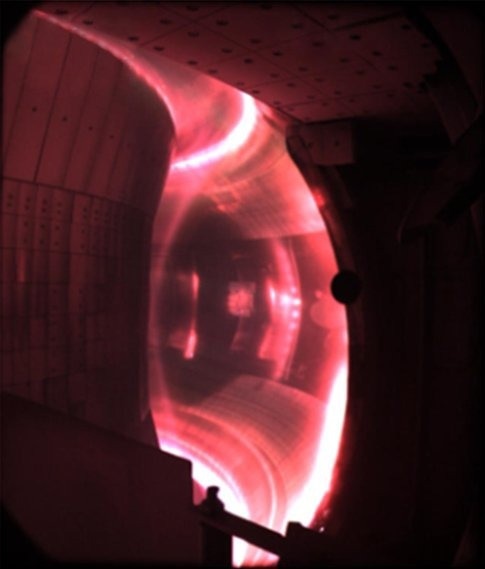Matheus Palmero and Iberê Caldas from the University of São Paulo, Brazil, have investigated the characteristics of intermittent plasma behavior in fusion reactors. Their findings have been published in the journal Fundamental Plasma Physics.

Plasma confined inside a tokamak. Image Credit: Xiang Gao et. al.
Tokamaks are among the most extensively researched devices in the global effort to develop sustained nuclear fusion. Using powerful magnetic fields, they trap superheated plasma within their doughnut-shaped interiors, letting atomic nuclei combine and unleash massive quantities of energy. If the plasma is properly contained, the process will provide more than enough energy to sustain the fusion reaction indefinitely.
One of the most significant issues with this strategy is the presence of small variations in plasma motion caused by variables such as flaws in the tokamak’s magnetic field coils or temperature changes in the plasma. To adjust for these disruptions, operators must correctly measure the deviations.
The study sheds new light on the various processes that influence plasma development when it deviates from its predicted motion. Incorporating these ideas into real tokamak operations might be a promising step toward achieving the long-awaited goal of continuous nuclear fusion.
Within a tokamak, fluctuating plasma is best defined as a ‘mixed phase space’ in which chaos coexists with regular motion. Palmero and Caldas’ study contains two numerical investigations into the properties of mixed-phase space that account for the magnetic fields utilized to confine the plasma.
Their first technique recognizes repeated patterns in groups of chaotic plasma trajectories and utilizes them to locate magnetic field lines formed by the plasma that differ considerably from their regular arrangement. The second examines the short-lived behavior of these field lines just before they escape from the tokamak.
The pair believes that by providing more details on the evolution of tokamak plasma, their techniques would help researchers better understand how plasma behaves in a mixed-phase space. They could ultimately result in sophisticated new methods for confining plasma effectively.
Journal Reference:
Palmero, M. S., et. al. (2024) Confining and escaping magnetic field lines in tokamaks: Analysis via symplectic maps. Fundamental Plasma Physics. doi:10.1016/j.fpp.2023.100027